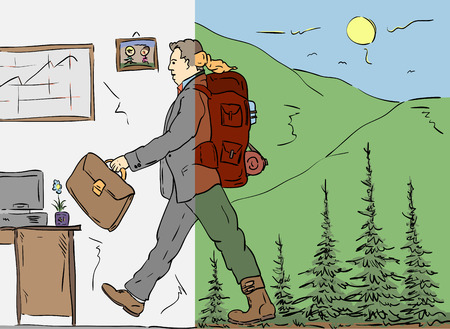Introduction: Embracing the Edge
At the very edge where town meets country, a unique story unfolds along the urban fringes of the UK. Here, beyond the last terrace and before the fields roll out, wild spaces linger quietly beside bustling streets. These margins are more than mere borders; they are vibrant corridors where city life brushes shoulders with nature’s resilience. It is in these overlooked places—hedgerows weaving through new estates, patches of ancient woodland shadowing motorways—that wildlife finds sanctuary and habitats persist amid human sprawl. Walking these boundary lines is to witness a living tapestry of hope: skylarks rising above allotments, fox cubs threading through brambles at dusk, and wildflowers thriving beside cycle paths. As we journey together along these urban fringe walks, we are invited to celebrate not just their beauty, but also the power of sustainable action—where every footstep can be a promise to protect what remains wild at the city’s edge.
2. Wildlife at the Threshold
Wandering along the urban fringe as dawn gently breaks, there’s a rare magic in glimpsing a fox slipping silently between shadow and light, its brush flickering against dew-laden grass. The chorus of blackbirds spills from tangled hedgerows, their song weaving through bramble and blossom, becoming part of the living fabric that ties city to countryside. These transitional spaces – neither wholly wild nor fully tamed – are sanctuaries for an astonishing array of creatures, each with a role to play in our shared landscape. Foxes, badgers, wood mice, and a myriad of birds find refuge here, thriving in the patchwork of allotments, parks, railway embankments and back gardens that skirt our towns. Their presence is not merely incidental; it is deeply woven into Britain’s natural and cultural heritage, inspiring folklore, literature and everyday wonder. Consider how these species contribute to both ecological health and our sense of place:
| Species | Typical Urban Fringe Habitat | Cultural Significance |
|---|---|---|
| Red Fox | Scrubland, gardens, woodland edges | Folklore figure; symbol of adaptability |
| Blackbird | Hedgerows, parks, suburban gardens | Renowned for its song; motif in poetry |
| Hedgehog | Piles of leaves, compost heaps | Loved British garden visitor; conservation concern |
| Bats (e.g., Pipistrelle) | Trees near water, old buildings | Indicators of environmental health; subject of local tales |
This delicate balance at the threshold is easily overlooked as we stride along footpaths or cycle the greenways linking city to shire. Yet each encounter – a tawny owl’s call at dusk or the skittering of a vole beneath nettles – reminds us how vital these habitats are. They serve as living corridors where wildlife can move and thrive amidst human activity. In cherishing these daily marvels and recognising their importance, we strengthen our resolve to protect them for generations yet to wander these same borderlands.

3. Habitats in Peril and Promise
There is a quiet magic to the urban fringe: a sudden patch of wildflowers humming with bees, the flutter of a wren deep in a bramble thicket, or the ancient oak standing sentinel between new builds and railway lines. Yet, these precious habitats walk a delicate line between survival and loss. As we wander along city edges—from the leafy outskirts of Bristol to London’s patchwork Green Belt—each step reveals both the vulnerability and resilience of our natural neighbours.
The Pressures of Development
It’s impossible to ignore the encroaching tide of development that presses against these green lungs. Fields once bursting with buttercups become car parks; woodlands shrink as housing expands. Every new road or retail park chips away at spaces where foxes roam and chiffchaffs nest. The push for progress is relentless, yet the cost can be measured in birdsong lost and wild corners erased.
Invisible Threats: Pollution and Fragmentation
Beyond bulldozers and blueprints, subtler dangers lurk. Runoff from roads brings oil and litter into ponds, while pesticides on suburban lawns seep into hedgerows. Even noise can fray the edges of tranquillity, unsettling shy mammals or drowning out dawn choruses. Habitats become islands, cut off by fences and footpaths—struggling to connect in the way nature intended.
Hope in Small Places
Yet hope persists, often in unexpected forms. The smallest meadow, left uncut behind a row of terrace houses, becomes a haven for butterflies. A forgotten copse shields fledgling owls from city lights. In these modest sanctuaries, biodiversity clings on—and sometimes flourishes—thanks to thoughtful stewardship and community care. Every wild verge and tangled hedge offers promise: not just as remnants of what was, but as seeds for what might be.
As we lace up our walking boots and set out along these fringes, each footfall is an act of witness—and perhaps, if we choose it, an act of protection for all that thrives at the edge.
4. Treading Lightly: Responsible Urban Walking
As we lace up our boots and set out along the green fringes of our towns and cities, every step is an opportunity to become a steward of the land. The gentle chorus of birds and the subtle rustle of hedgerow creatures remind us: these spaces are not ours alone. Through mindful walking, we can nurture this delicate balance between human movement and wild habitat.
Story-driven Guidance for Walkers
Imagine an early morning stroll along the edge of a bustling village. Mist clings to fields where skylarks rise, and dew sparkles on bramble leaves. You notice a narrow path winding through, bordered by bluebells and foxgloves. Here, your choices matter. Staying on marked routes protects the undergrowth where young rabbits nest, while avoiding shortcuts across meadows ensures rare orchids remain undisturbed.
Practical Ways to Protect Wildlife and Habitats
| Action | Benefit | Local Example |
|---|---|---|
| Stick to Designated Paths | Prevents trampling fragile plants and disturbing animal burrows | The Thames Path’s waymarked trails safeguard riverside habitats for water voles |
| Keep Dogs on Leads in Sensitive Areas | Reduces disturbance to ground-nesting birds and small mammals | Epping Forest dog rules protect deer fawns and nesting warblers |
| Avoid Littering—Take Rubbish Home | Keeps habitats safe from pollutants and harm to wildlife | Community litter picks in Sheffield’s Porter Brook Valley enhance otter habitats |
| Support Local Conservation Groups | Resources for habitat restoration and educational events | Donating to The Wildlife Trusts helps manage urban reserves across the UK |
| Observe Wildlife Quietly from Afar | Lowers stress for animals during sensitive breeding seasons | Bird hides at WWT London Wetland Centre allow close observation without intrusion |
A Shared Sense of Stewardship
Every walker becomes part of a larger story—a community gently treading alongside foxes, badgers, and butterflies. Whether you pause to pick up windblown plastic or join a local rewilding day, your actions ripple outward. With each visit, let us walk lightly, leaving only footprints and taking home memories, so these green corridors flourish for generations yet to come.
5. Community Connections and Local Legends
Along the urban fringes of Britain, where concrete yields to a patchwork of wildflower meadows and ancient hedgerows, the spirit of community flourishes as vibrantly as the landscapes themselves. These green edges are not just corridors for wildlife—they are living tapestries woven from local stories, shared memories, and the collective will to protect what remains precious.
Weaving Old Wisdom with New Endeavours
It is here that volunteers gather in early morning mist or golden dusk, tending to habitats as their ancestors once did—clearing invasive brambles, planting native saplings, and building habitats for hedgehogs and bees. Yet, these efforts are guided by more than just modern conservation science. The passing down of traditional knowledge—when to sow wild garlic, how to coppice hazel without harming nesting birds—remains at the heart of sustainable stewardship. Today’s citizen scientists blend this wisdom with digital mapping and wildlife surveys, ensuring every footstep along a city’s edge helps nurture its future.
The Power of Stories and Folklore
Beneath the boughs of oaks said to be older than the city itself, storytellers gather young and old for tales of foxes outwitting hunters, or spectral deer glimpsed at twilight. Such folklore is more than entertainment—it deepens our connection to place, fostering a sense of guardianship rooted in belonging. Events like seasonal wassails or bluebell walks become rituals of renewal, reminding us that nature’s rhythms beat on even amidst urban bustle.
Celebrating Shared Achievements
From community orchards rescued from development to “Friends of the Fringe” groups adopting neglected pathways, local initiatives thrive through cooperation and pride. Schoolchildren paint signs celebrating rare butterflies; pensioners record dawn bird calls for national databases. Together they show that sustainability is not a solitary act but a communal journey—one that honours both heritage and hope.
In these living borderlands, action for sustainability is sustained by story, memory, and unity. Protecting wildlife and habitats becomes not only an environmental effort but a celebration of all that connects us: to each other, to our history, and to the wild spaces at our cities’ doors.
6. A Future Rooted in Respect
Looking ahead, we can imagine a future where the urban fringe is more than a mere boundary—it becomes a living, breathing corridor for wildlife and wildflowers, woven seamlessly into the daily rhythm of human life. Picture early morning walks along winding paths lined with native hedgerows, where the soft flutter of a robin’s wings reminds us of the delicate balance we share with nature. These spaces are not just green buffers but thriving ecosystems, lovingly preserved by communities who have chosen to walk gently upon the land.
In this vision, every step taken is mindful—boots tread lightly, eyes scan for shy foxes in brambles or bats at dusk. Local councils and volunteers work hand in hand, creating wildflower meadows and bug hotels, transforming neglected corners into havens for bees and butterflies. Schools bring children out to count ladybirds, plant bluebells, and learn the names of ancient trees; elders share stories of how the land once was and how it might be again.
This renewed sense of belonging grows from small, everyday choices: litter picked up rather than left behind, dogs kept on leads near nesting birds, seeds sown not just for beauty but for biodiversity. As people reconnect with their patch of earth, they become caretakers rather than mere passers-by. The urban fringe ceases to be an edge; it becomes a root—a place where community and countryside entwine.
The hope is that these living corridors will stretch across our cities like threads in a tapestry, linking gardens to parks to woodlands beyond. Wildlife will have safe passage; rare orchids might flower again along forgotten verges. More importantly, people will rediscover their place within nature’s story—not apart from it but woven through its every chapter.
By choosing respect and care as our compass, we can ensure that sustainability isn’t just a concept discussed in council meetings or classrooms—it’s something embodied in every footstep along our beloved urban-fringe walks. Together, we can nurture a future where both people and wildlife flourish side by side, rooted in mutual respect and wonder.

